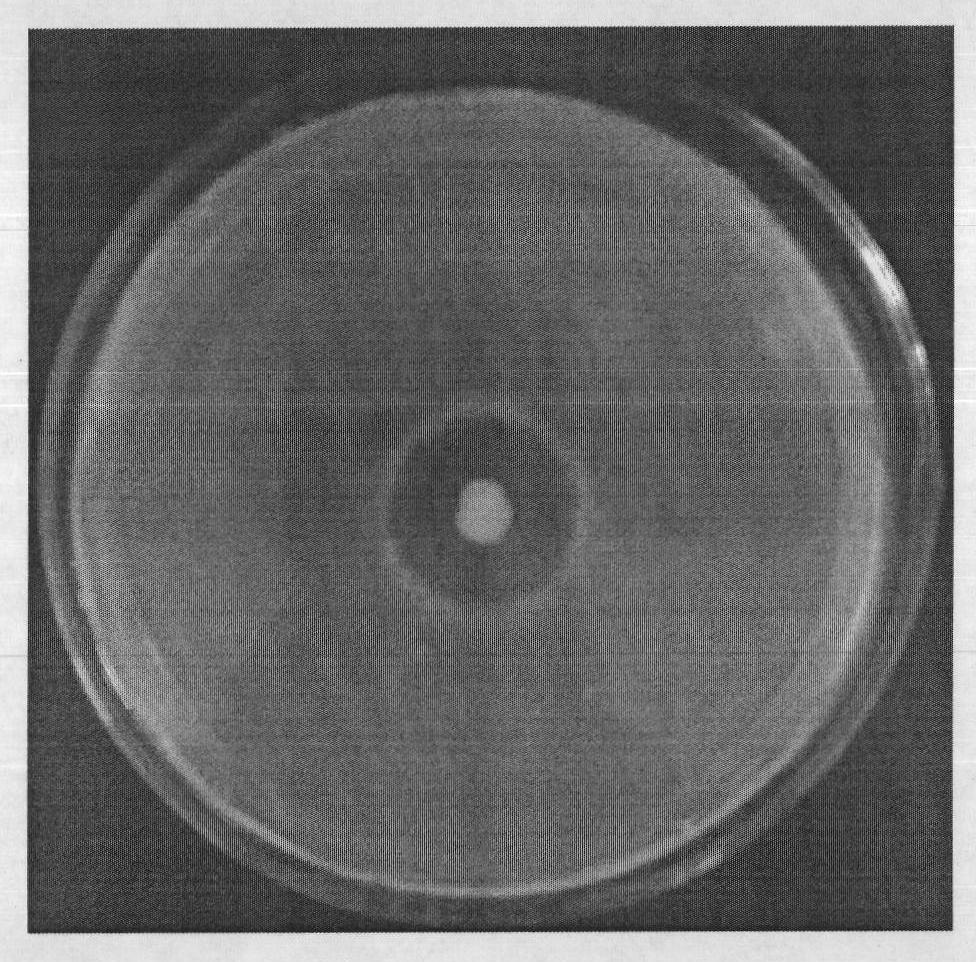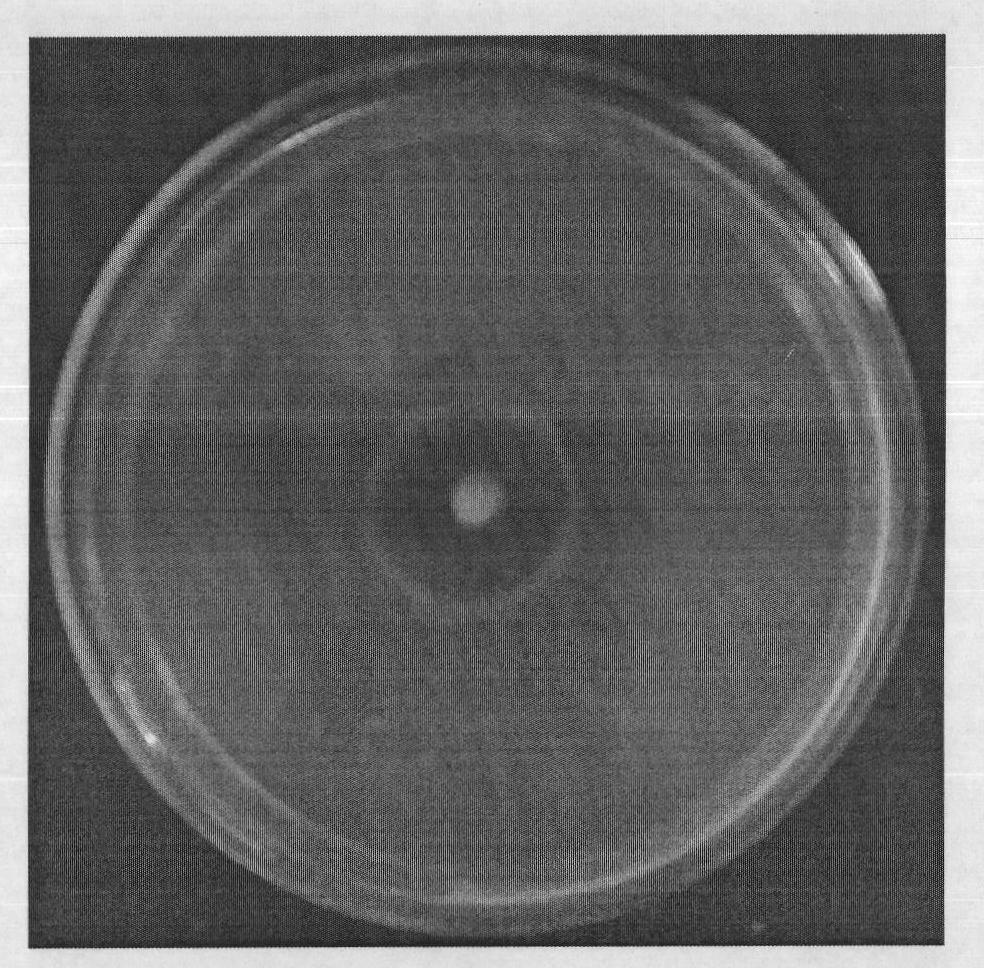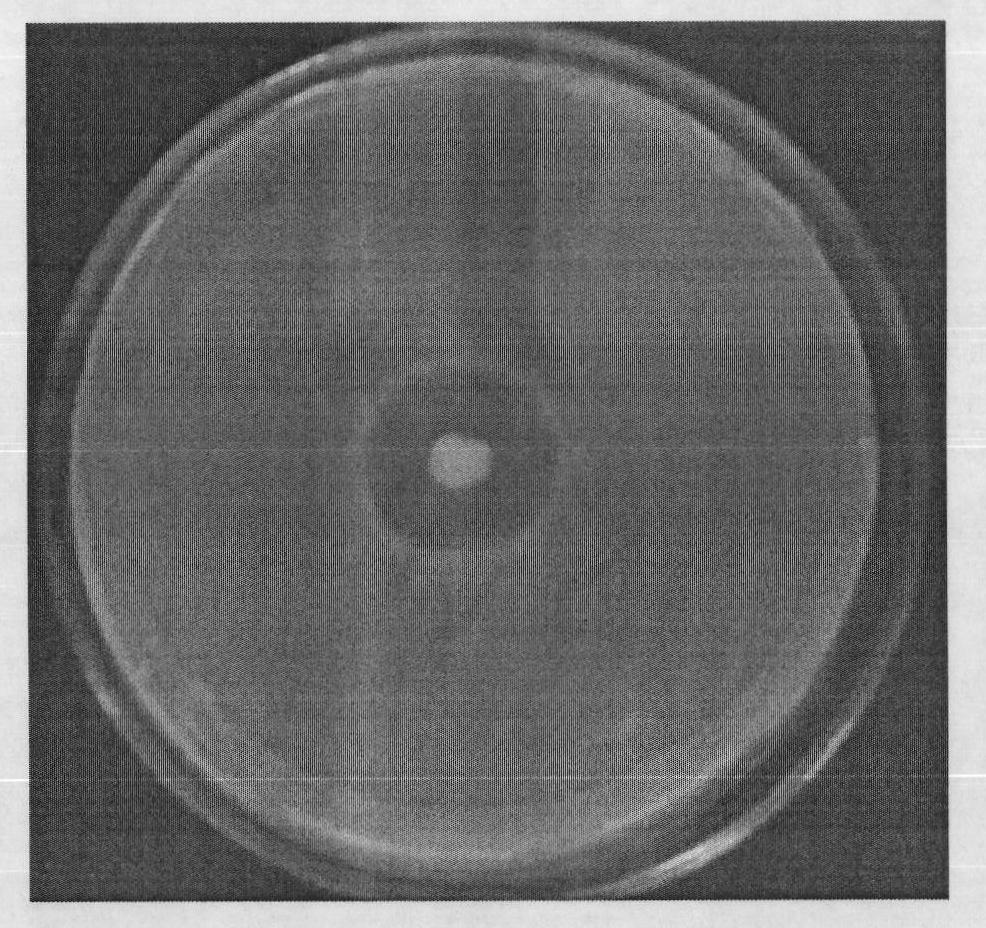Application of Bacillus subtilis ANSB060
A technology of Bacillus subtilis and Escherichia coli, applied in application, animal feed, additional food elements, etc., to achieve strong stress resistance, promote animal growth, and high spore survival rate
- Summary
- Abstract
- Description
- Claims
- Application Information
AI Technical Summary
Problems solved by technology
Method used
Image
Examples
Embodiment 1
[0046] The preparation of embodiment 1 Bacillus subtilis ANSB060 fermented liquid
[0047] Get Bacillus subtilis ANSB060 CGMCC No.3440 5ml (viable bacteria concentration is 10 9 CFU / ml), inoculated in 50ml medium for shake flask fermentation culture, the fermentation temperature is 37°C, the pH value is 7.0, the rotation speed is 200r / min, and the fermentation time is 24h.
[0048] Among them, the shake flask fermentation medium is composed of the following components: peptone 10g, glucose 5g, dipotassium hydrogen phosphate 0.1g, potassium dihydrogen phosphate 1.0g, manganese sulfate monohydrate 0.5g, magnesium sulfate heptahydrate 1.0g, distilled water 1000mL ; pH value is 7.0.
[0049] After the shake flask fermentation, carry out the fermenter pilot test, take 50ml shake flask fermentation seed liquid and inoculate it into a 10L fermenter, the liquid volume is 5L, the fermentation temperature is 37°C, the pH value is 7.0, the stirring speed is 300r / min, the fermentation ti...
Embodiment 2
[0052] Example 2 Probiotic verification of Bacillus subtilis ANSB060
[0053] Take 3 nutrient agar plates and culture them at 37°C for 24 hours, and remove part of the water to facilitate the diffusion of antibacterial substances in the medium. Take a small amount of Bacillus subtilis ANSB060 with an inoculation stick, and plant them in the center of the poured nutrient agar plate, culture at 37°C for 24 hours, then put the plate upside down on a petri dish containing a thin layer of chloroform and cover it for fumigation for about 30 minutes to kill the live bacteria. cells and fix the colonies to the surface of the plate. Remove the lid of the Petri dish and allow the residual chloroform in the plate to evaporate completely for 20 minutes. Spread a layer of freshly cultured Escherichia coli, Salmonella, and Staphylococcus aureus culture solution on the surface of the three plates, pour out the remaining bacteria solution after covering evenly, dry the plate, and place the p...
Embodiment 3
[0055] Example 3 Verification of Stress Resistance of Bacillus subtilis ANSB060
[0056] 1. Tolerance test of simulated gastric juice environment: Dissolve pepsin in 0.5% normal saline to make the final concentration 3g / L, adjust the pH value to 2.0 with concentrated hydrochloric acid or 10% NaOH. Count the live bacteria liquid of Bacillus subtilis ANSB060 before the test. During the test, take 0.5mL live bacteria solution and add it to 4.5mL simulated gastric juice, and quickly mix it fully on a shaker, then place it at 37°C for 2 hours to obtain a culture solution, and count the number of viable bacteria remaining in the spores.
[0057] The results showed that the spore survival rate reached 98.8%.
[0058] 2. Tolerance test of simulated bile salt environment: use pancreatin to make a 1g / L solution, add 0.3% pig bile salt to the solution, adjust the pH to 8.0 with 10% NaOH, and prepare a bile salt solution Sterilize by filtration with a 0.45 μm microfiltration membrane. ...
PUM
 Login to View More
Login to View More Abstract
Description
Claims
Application Information
 Login to View More
Login to View More - R&D
- Intellectual Property
- Life Sciences
- Materials
- Tech Scout
- Unparalleled Data Quality
- Higher Quality Content
- 60% Fewer Hallucinations
Browse by: Latest US Patents, China's latest patents, Technical Efficacy Thesaurus, Application Domain, Technology Topic, Popular Technical Reports.
© 2025 PatSnap. All rights reserved.Legal|Privacy policy|Modern Slavery Act Transparency Statement|Sitemap|About US| Contact US: help@patsnap.com



